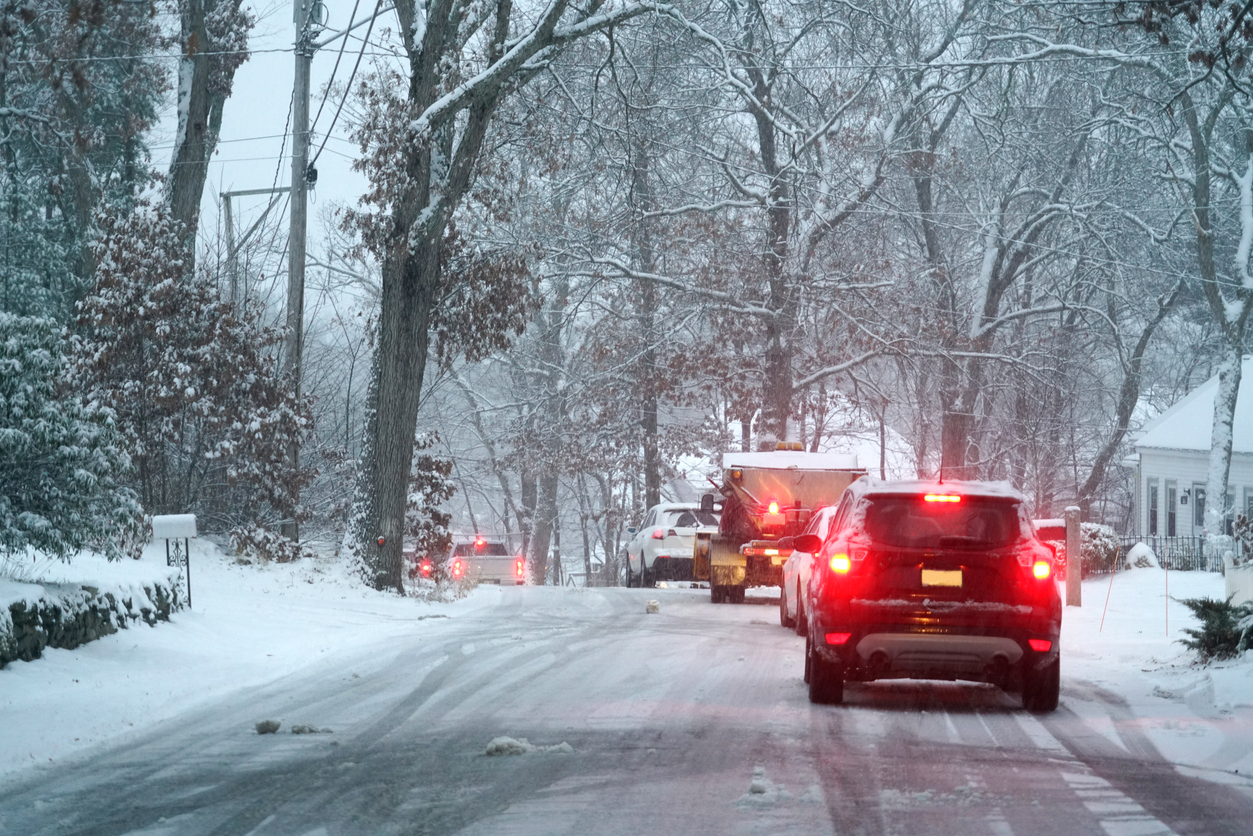Weather conditions can drastically affect how negligence is determined in auto accident cases. Whether a crash occurs in heavy snowfall or during a torrential downpour, courts and insurance companies evaluate liability based on the specific circumstances of the incident. Understanding the legal differences between driving in snow vs driving in rain is critical to grasping how fault is assigned and how weather-related behavior is legally scrutinized. While both scenarios involve environmental hazards, they present unique challenges from both a legal and liability standpoint.
How Fault Is Assessed in Weather-Related Accidents
The determination of fault in weather-related accidents depends on whether a driver exercised reasonable care under the circumstances. Courts look at factors such as vehicle speed, braking distance, tire condition, visibility, and adherence to traffic laws. When comparing driving in snow vs driving in rain, the primary distinction lies in the level of foreseeability and the precautions expected under each condition.
In rain, hydroplaning is often an issue, but visibility is typically better than in snowstorms. Snow, on the other hand, introduces factors like ice, reduced traction, and delayed response time. These distinctions affect what is considered negligent driving in either context.
Legal Expectations for Driving in Snow
In snow-covered conditions, drivers are expected to operate their vehicles with heightened caution. Courts tend to evaluate if the motorist reduced speed appropriately, used snow tires or chains, and adjusted their braking distance. Failing to make these adjustments may lead to a finding of negligence.
For instance, if a vehicle skids through a red light due to icy conditions, but the driver was traveling at a speed suitable for dry pavement, a court is likely to find the driver at fault. In such cases, legal precedent shows that drivers must anticipate hazards and compensate accordingly when driving in snow vs driving in rain.
Legal Expectations for Driving in Rain
When rain impacts the road, drivers are obligated to adapt their driving behavior to maintain control. Reduced visibility and wet surfaces can result in hydroplaning, which increases the risk of collisions. Unlike snow, where the conditions are often visibly hazardous, rain can sometimes present deceptive dangers, such as invisible oil slicks or sudden pooling of water.
In court evaluations, a driver who does not turn on headlights during heavy rain, fails to slow down in flooded zones, or neglects to replace worn windshield wipers may be considered negligent. These subtle yet impactful details often become pivotal in determining fault when comparing driving in snow vs driving in rain.
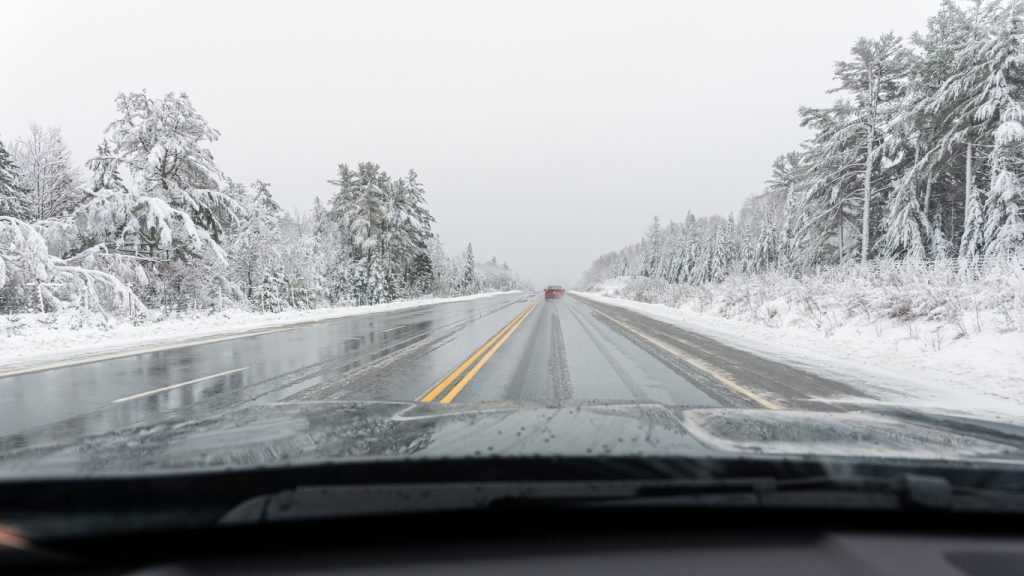
Foreseeability and Legal Duty of Care
Foreseeability is a foundational element in negligence law. A driver’s legal duty of care is adjusted according to the foreseeable risks posed by weather. Snow is usually forecasted and visibly disruptive, requiring a clear response from drivers. Rain, particularly sudden showers or downpours, may catch drivers off guard, but legal responsibility still rests on reasonable preparation.
In comparative fault states, courts may assign partial fault to multiple parties. For example, a driver might be deemed 60% at fault for skidding on ice due to driving too fast, while another motorist might bear 40% of the fault for tailgating. The legal analysis of driving in snow vs driving in rain often hinges on the driver’s response to foreseeable conditions and adherence to best practices.
Statutory Violations and Weather Considerations
Both rain and snow amplify the consequences of minor statutory violations. Running a red light or tailgating becomes significantly more dangerous in adverse weather. Some jurisdictions even have statutes that specifically address weather-adjusted speed limits, and violations of these can constitute negligence per se.
For instance, if a driver violates a posted weather advisory or speed reduction directive during a snowstorm, that violation may be automatically considered negligent. The presence of such weather-specific regulations influences the liability standards when analyzing driving in snow vs driving in rain.
Evidence and Witness Testimony in Weather-Related Claims
Litigating car accident claims that occur in adverse weather often involves interpreting environmental evidence. In snow-related collisions, tire tracks, impact patterns, and road sanding records are evaluated. Rain-related accidents may require examination of traffic cameras, water pooling reports, or driver visibility documentation.
Testimonies from witnesses who can describe how the vehicle behaved—skidding, hydroplaning, or failing to brake—help reconstruct the moments before a crash. These differing forms of evidence directly affect how fault is distributed in cases involving driving in snow vs driving in rain.
Judicial Precedent: Comparing Snow and Rain Accident Cases
Case law continues to shape how courts differentiate between negligent conduct in snow versus rain. One relevant example comes from a Massachusetts appellate decision, where a driver skidded into another car during snow. The court ruled that because the driver failed to account for icy roads, they breached their duty of care.
In contrast, an Illinois case involving a rain-soaked highway held that a sudden, extreme downpour constituted an “act of God,” reducing liability for an accident. These judicial distinctions reinforce that driving in snow vs driving in rain carries different thresholds for proving negligence.
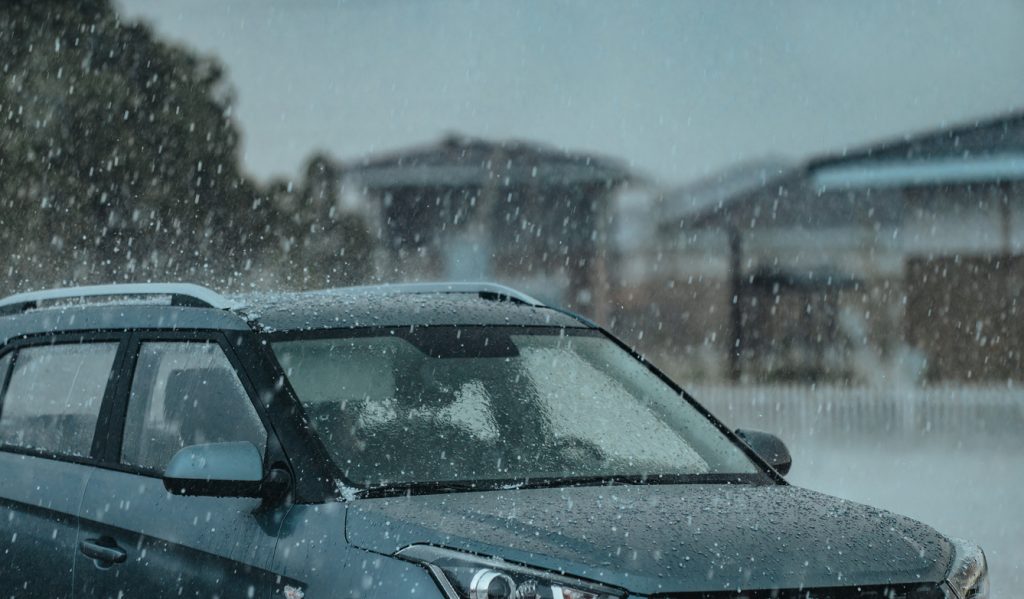
Insurance Considerations and Claim Adjustments
Insurance companies investigate weather-related crashes through detailed claims analysis. In rain-related accidents, insurers examine whether the driver’s visibility was impaired, whether headlights were in use, and whether the vehicle hydroplaned due to high speed. In snow-related cases, insurance assessors look at traction control, tire condition, and whether the driver heeded weather warnings.
Policyholders involved in collisions while driving in snow vs driving in rain may face different interpretations of contributory negligence, which could reduce or eliminate claim payouts. Adjusters frequently rely on weather data and road conditions at the time of the crash to guide settlement decisions.
Comparative Negligence and Driver Responsibility
States using comparative negligence frameworks allow for shared fault. If a driver involved in a snow-related crash was traveling too fast for icy conditions, yet the other vehicle failed to yield, both may be apportioned liability. In rain crashes, a driver who loses control after hydroplaning may still be partially liable if it’s found that their tires were bald or brakes poorly maintained.
This balancing of fault underlines how driving in snow vs driving in rain results in nuanced legal outcomes. The duty to drive cautiously exists regardless of weather, but the level of reasonable care expected changes with the severity of conditions.
Government Guidelines on Safe Driving in Adverse Weather
The Federal Highway Administration (FHWA) notes that over 1.2 million weather-related crashes occur annually in the United States, with rain and snow accounting for a large percentage. The agency provides best practice recommendations on safe speeds, tire maintenance, and visibility precautions for different types of weather. Following these practices not only enhances safety but also reduces legal liability in the event of a crash.
A more detailed breakdown of these recommendations can be found in the FHWA Weather-Related Crash Statistics, which offer a factual basis for determining fault in cases involving driving in snow vs driving in rain.
Why Driving in Snow vs Driving in Rain Carries Different Legal Weight
The legal consequences of driving in snow vs driving in rain stem not just from how each condition impacts vehicle control, but how the law interprets driver responsibility under those distinct scenarios. Snow presents a predictable hazard—weather forecasts, road advisories, and regional familiarity often put drivers on high alert. Rain, by contrast, can develop with little notice, creating instantaneous dangers like hydroplaning or visibility loss. Despite these differences, drivers are expected to exercise caution appropriate to the condition. The courts routinely scrutinize how individuals respond while driving in snow vs driving in rain, especially when determining whether negligence contributed to a crash.
In negligence litigation, foreseeability is central. Snowstorms are typically anticipated, making it harder for drivers to claim they were caught off guard. If someone crashes while driving in snow vs driving in rain, the court might ask: Did they heed public warnings? Were winter tires or chains used? Did they adjust speed? When similar questions are posed for rain-related incidents, visibility and hydroplaning are focal points. Drivers who fail to turn on headlights or who tailgate in wet conditions can easily be found negligent. Legal standards evolve, but the duty to act reasonably while driving in snow vs driving in rain remains constant.
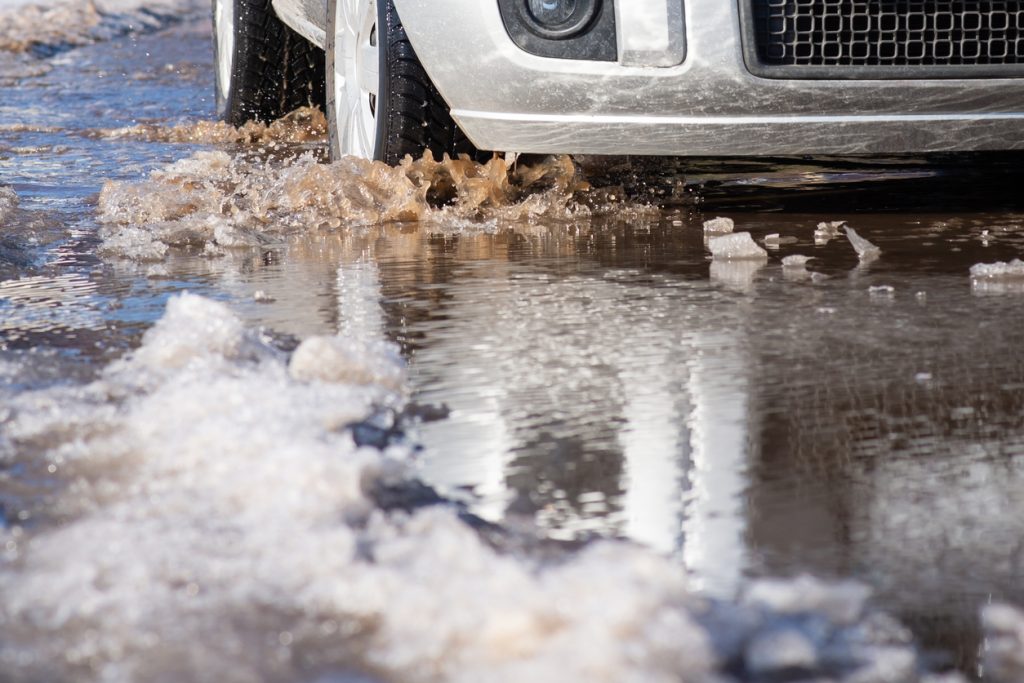
Analyzing Negligence in Driving in Snow vs Driving in Rain Cases
Proving negligence when driving in snow vs driving in rain often comes down to showing whether the driver met their legal duty of care under the circumstances. A person sliding through an intersection in the snow might claim black ice as a defense. However, if evidence shows that others navigated the same road safely by reducing speed or using appropriate tires, liability may still attach. Similarly, a driver losing control during rainfall may argue that the road was slick, but if their tire treads were worn down or if their speed was excessive, courts are less sympathetic.
Legal analysis doesn’t accept weather as an excuse; it simply redefines what counts as reasonable behavior. If a prudent driver would have reduced speed or delayed travel due to conditions, then failing to do so may result in liability. That’s why attorneys must be diligent in proving how the at-fault party acted unreasonably while driving in snow vs driving in rain, rather than just citing bad weather as a factor.
Vehicle Readiness Matters When Driving in Snow vs Driving in Rain
The legal outcome of a crash involving driving in snow vs driving in rain can also hinge on vehicle readiness. In snow, drivers are expected to use winter-grade tires, functional defrosters, and to maintain clean windshields. Rain demands working wipers, proper tire tread, and responsive brakes. Any neglect of these can imply a disregard for safety and invite legal liability.
A driver skidding on snow-packed roads without chains, or another hydroplaning with bald tires, may be judged more harshly by a jury. In both instances, courts evaluate whether the driver’s choices reflected the risk at hand. Thus, driving in snow vs driving in rain is more than just environmental—it’s a question of proactive safety measures. Drivers who prepare are less likely to be held liable; those who do not may face not only lawsuits but also punitive assessments in extreme cases.
Regional Precedents Affect Fault in Snow vs Rain Accidents
Geographic norms also play a major role in evaluating driving in snow vs driving in rain. In Minnesota or New York, snow-related driving is routine. As a result, drivers are expected to be highly capable of managing snowy roads. In contrast, southern states like Georgia or Louisiana, where snow is rare, may allow more leniency. However, for rain, states like Florida or Washington impose strict expectations due to the frequency of rain-related accidents.
Precedents often reveal a judicial trend: frequent weather equals increased legal responsibility. In snowbelt states, failure to prepare or drive appropriately is rarely excused. Similarly, in places where rainstorms are common, courts expect skill and caution in equal measure. Therefore, someone driving in snow vs driving in rain must not only react to conditions but anticipate them, especially when driving through jurisdictions with known weather-related case law.
How Crash Evidence Influences Liability
Evidence is critical in litigation involving driving in snow vs driving in rain. In snow, tire marks, crash angles, and snowbank depth can all tell a story. Rain often erases visual evidence, forcing reliance on surveillance footage or eyewitness accounts. The preservation of these details immediately after the accident can heavily impact fault assessment.
Expert testimony often becomes the deciding factor. An accident reconstructionist might illustrate how a driver going 45 mph on a snow-covered 35-mph zone had insufficient braking distance. Or a rain-related crash might focus on how worn tires extended stopping distance during a hydroplane. These data points bring clarity to how a driver behaved while driving in snow vs driving in rain, showing whether their response matched the weather’s demands.
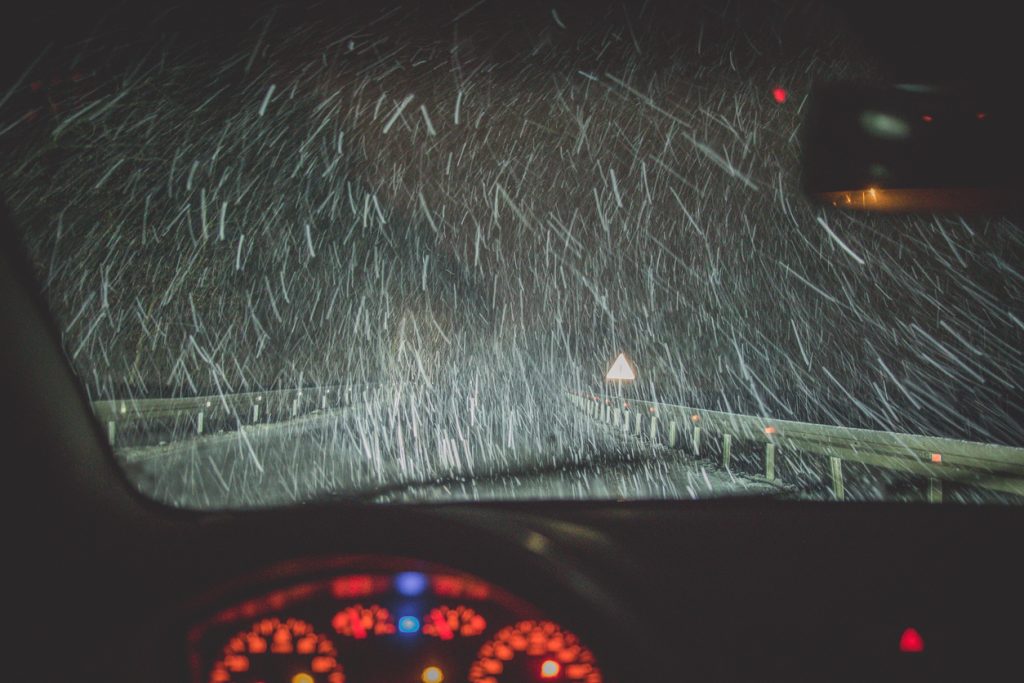
Comparative Negligence in Driving in Snow vs Driving in Rain Disputes
Comparative negligence plays a substantial role in evaluating fault in driving in snow vs driving in rain cases. If two drivers are involved in a crash, courts often assign percentage-based fault. A driver who skids on ice while speeding might bear 70% liability, while the other, who failed to yield, may carry 30%. The same principle applies when a rainstorm causes one vehicle to lose control and strike another. In both cases, assigning degrees of fault reflects a realistic view that weather complicates even reasonable driving.
Because driving in snow vs driving in rain involves different reaction demands, legal analysis must break down what actions were possible at the time. Did the driver act quickly? Did they ignore posted signs? Were they distracted? These questions allow courts to apportion blame fairly, even when Mother Nature shares in the chaos.
Insurance Company Standards for Snow and Rain Accidents
Insurance carriers use weather-specific protocols to evaluate claims involving driving in snow vs driving in rain. In snow crashes, adjusters review whether drivers used snow tires, reduced speed, or were cited by police for unsafe behavior. In rain crashes, emphasis is placed on water depth, visibility, and driving speed. The presence of mechanical issues or ignored warnings can further shift the fault scale.
Adjusters may reduce claim payouts if contributory negligence is found. If a driver hydroplaned but was going above the speed limit in heavy rain, fault is likely. If a driver slid on snow but failed to use available chains, the claim could be denied entirely. The standards used by insurers underscore the legal difference in how courts view driving in snow vs driving in rain, particularly when assigning blame and evaluating payouts.
Risk Awareness and the Legal Standard of Care
Every motorist has a legal obligation to understand and anticipate risk. This standard of care is fluid and weather-dependent. Someone driving in snow vs driving in rain is not judged solely by their intentions but by their adherence to safety norms. Operating a vehicle during a blizzard without caution is just as risky—and negligent—as driving through flooded streets at high speed.
Both scenarios demand informed judgment. Courts look to whether drivers acted in accordance with public advisories, adjusted speeds, or chose safer routes. Negligence arises when drivers either ignore the severity of the weather or falsely believe that weather absolves them of duty. The reality is that responsibility never disappears—it adapts. And that adaptation is at the heart of how the law views driving in snow vs driving in rain.
Key Takeaways in Legal Analysis
Understanding the legal contrast between driving in snow vs driving in rain requires an in-depth look at driver behavior, weather predictability, and adherence to safety protocols. Courts weigh whether each driver acted reasonably based on the conditions at hand, and whether failure to adjust driving techniques contributed to the incident.
Whether snow piles on the streets or rain batters the windshield, liability is not automatically absolved by the weather. Drivers are expected to prepare and respond appropriately. These expectations form the legal foundation for determining fault in any weather-related accident.
For further analysis of how weather impacts driving liability, the LawFinn article on snow vs rain driving provides additional insight into behavioral expectations and case law interpretations.
